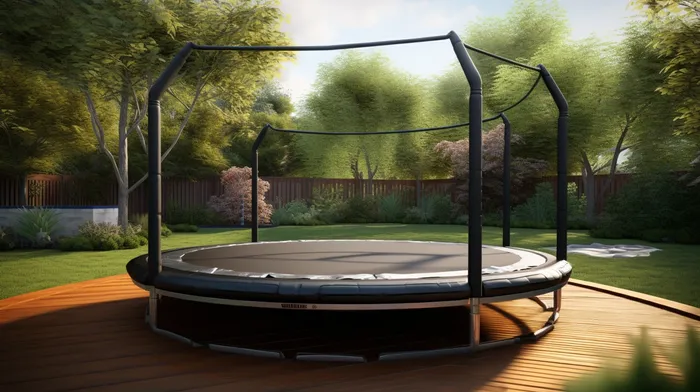A backyard trampoline may seem like a fun way to encourage your kids to get some exercise and enjoy the outdoors, but this seemingly innocent piece of equipment causes an alarming 98,000 injuries per year and over 3,000 hospitalizations. With experts warning that it’s particularly risky for young children, you might want to think twice about having one at home.
Despite a decline in trampoline sales over the past decade, injuries from these devices remain all too common. Susannah Briskin, M.D., a pediatric sports medicine specialist with Rainbow Babies and Children’s Hospital in Cleveland, states, “We believe the risk of using the trampoline and suffering an injury is still high, despite safety measures which the industry has put into place.”
The American Academy of Pediatrics Weighs In
Dr. Briskin is also the co-author of a report released by the American Academy of Pediatrics (AAP) that strongly discourages the use of home trampolines. This report provides updated data on the number and types of injuries attributed to trampolines. According to Dr. Briskin, the AAP is adamant about their stance on the issue: “The AAP strongly discourages the use of a home trampoline. It bears significant injury risk – especially when somersaults are performed or there are multiple jumpers on the mat at one time.”
The report reveals that around 75% of trampoline injuries occur when multiple people are jumping on the mat simultaneously. Unsurprisingly, the youngest participants face the greatest risk for significant injury, particularly children under the age of 5. Almost half of the injuries within this age group result in fractures or dislocations.
The Types of Injuries Associated with Trampolines
Although the majority of trampoline injuries are sprains, strains, contusions, or other soft tissue injuries, younger children seem to be more prone to bony injuries. The report’s authors emphasize the particular vulnerability of this age group: “Although most trampoline injuries are sprains, strains, contusions or other soft tissue injuries, younger children seem to be more prone to bony injury.”
The Flaws of Safety Measures
Trampoline industry efforts to reduce injuries have focused mainly on providing safety enclosures and padding. However, research from the American Association of Orthopedic Surgeons (AAOS) indicates that these measures are not as effective as one might think. In fact, according to a study in the Journal of Pediatric Orthopedics, between the years of 2002 and 2011, around 22% of trampoline injuries were caused by direct contact with safety equipment – primarily the safety net and padding.
Furthermore, a study published in the Journal of Pediatric Surgery noted that the majority of trampoline injuries affecting children 4-years-old and younger were caused by falling off the trampoline or on the trampoline frame, despite the presence of safety nets around trampolines.
Is It Worth the Risk?
Considering the numerous injuries and risks associated with trampolines, many experts recommend that parents avoid installing these devices in their backyards. The AAP, AAOS, and numerous other organizations continue to reiterate the importance of not using home trampolines, citing the significant risk posed to children.
For those who still choose to have a trampoline at home, it is crucial to enforce strict safety guidelines. This includes allowing one jumper at a time, prohibiting somersaults, ensuring constant adult supervision, and regularly inspecting the trampoline for wear and tear.
Safer Alternatives to Trampolines
If you’re concerned about the risks posed by trampolines but still want your kids to enjoy some outdoor playtime, consider these safer alternatives:
- Playing tag, catch, or other classic outdoor games, which encourage physical activity and healthy competition
- Organized sports, such as soccer, basketball, swimming, or gymnastics
- Jumping rope, which helps improve coordination and cardiovascular health
- Exploring nature through activities like hiking, birdwatching, and geocaching
By opting for a safer form of entertainment for your children, you can help them stay active and engaged without putting their well-being in jeopardy.



